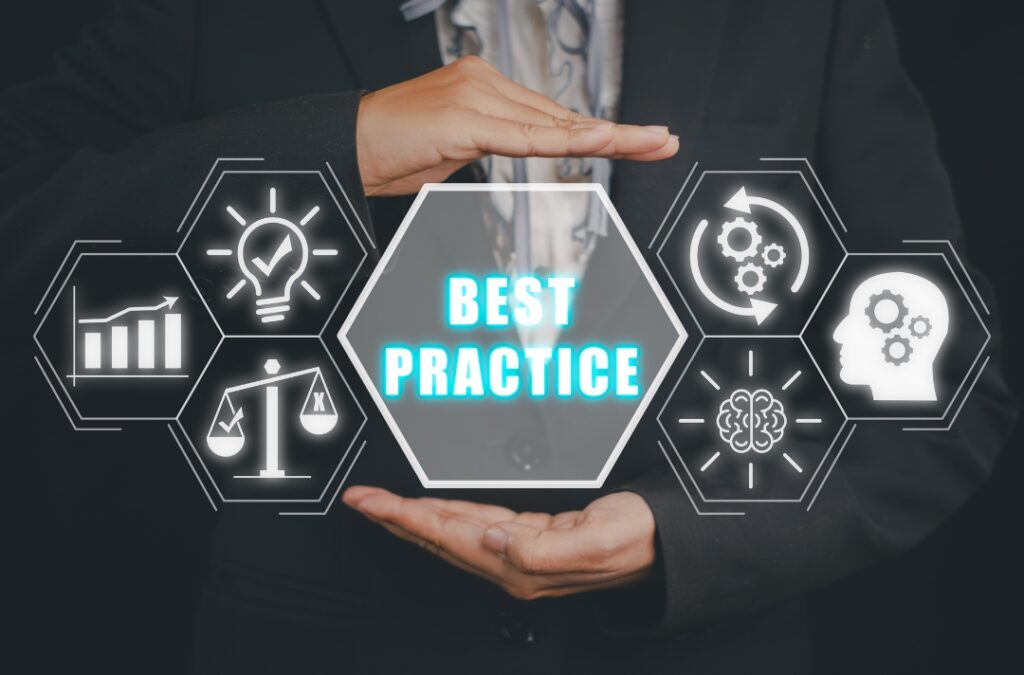Running a WordPress website may look easy from the outside, but it can become a headache. Site owners often face issues like outdated plugins, slow-loading pages, and potential security threats. These can decrease your site’s user-friendliness and negatively impact its search engine ranking. This makes good WordPress site management essential – not just to keep it operational, but to boost your business success.
So how do you keep your WordPress site in top shape without losing your mind? In this article, we’ll see seven ways to keep your website quick, secure, and easy to use.
Why Should You Care About Managing Your WordPress Website?
Good website management keeps your site working well, loading fast, and safe for people to visit. Following WordPress best practices reduces the risk of your website being hacked. It enhances the usability of your site and helps ensure everything is working as well as it can be. If you don’t effectively consider a management plan for your website, you could run the risk of slow loading times, unresponsive features for visitors, or leaving yourself exposed to potential hacking suspects. After all, why would you want your business negatively impacted by the website you are running?
Benefits of managing your website:
- Fast-Loading Website: Proper management of your website keeps it clutter-free. This results in faster loading, improved user experience, and reduced visitor drop-off due to slow speeds.
- Enhanced Security: Regular updates and monitoring protect against hacking, ensuring site and user data safety.
- Improved User Experience: Maintain responsiveness, mobile-friendliness, and easy navigation to engage visitors.
- Better Search Engine Rankings: Enhance and secure your site to achieve higher positions on search engines, attracting more traffic.
- Increased Conversions: A smooth, fast site boosts conversion rates by making it easy for users to complete actions.
Consider using plugin development services to maximize your WordPress website’s potential. These services will help you manage your site effectively and fully utilize its benefits.
7 Best Practices To Manage Your WordPress Website
Properly managing your WordPress website keeps it fast, secure, and engaging for visitors. Without good management, it can become slow and unappealing. The ultimate goal of correct management is to ensure your website runs smoothly, and the following best practices address everything from updates to security.
- Always Keep Your Website Updated
Keep your WordPress core, themes, and plugins updated. Updates protect your site from known vulnerabilities. Many hackers seek out outdated WordPress websites, and without updating, your site may be open to security issues.
In addition to security, the updates typically include better overall performance and/or additional features that enhance your visitor’s user experience and the functionality of the website. By consistently updating, you ensured the website always runs smoothly and securely.
- Use the Staging Site for Testing.
Another very important management feature is a staging site. A staging site is a great tool for managing your WordPress website. It provides you with the option of testing plugins, themes, and website updates before your implementation on your site. Testing your website on a staging site reduces the possibility that changes will break your live site or cause other problems. For example, it’s safer to test a new plugin or upgrade from an older version on a staging site.
This is particularly important for complex setups or when using plugin development services, as even a small error can have a significant impact.
- Ensure Your Site is Mobile-Friendly
As you probably know there are significant amounts of internet users that access websites from their mobile devices, therefore; it is important to ensure your WordPress site is completely mobile responsive. If your site is not optimized for mobile, you will experience higher bounce rates and lesser search engine rankings.
Google’s preferred algorithm leans towards having a mobile-friendly site. Consequently, your website’s responsiveness is relevant to the overall searchability of your website, when compared to less responsive sites. Test your site regularly across various devices to ensure everything—from menus to images—is optimized for mobile.
- Optimize Your Website for Speed
Speed is a vital component of user experience. Virtually any visitor to a slow site will grow impatient and leave before exploring your valuable content. The best way to avoid these declines in traffic is to optimize your website’s performance.
Start by compressing large images, as they are often the biggest factor in slowing down page load times. Tools like Smush can help reduce the file size without compromising image quality. Additionally, investing in a caching plugin such as WP Rocket ensures that your site loads quickly for returning visitors.
Enabling “lazy load” further boosts speed by only loading images as they appear on the user’s screen. To optimize your website to maximum potential, consider hiring WordPress custom plugin development experts to ensure a smooth process.
- Monitor website performance
You have to regularly monitor your site for its performance daily or weekly. Using dashboard tools, such as Google Analytics and ManageEngine Site24x7, you can check on multiple statistics about your visitors, including page load time, visitor activity, and how people travel around your site. These metrics are extremely valuable in finding out how well your website is performing and optimizing the site.
Monitoring tools ensure your site remains accessible to visitors 24/7. By keeping an eye on performance metrics you can prevent issues before they escalate.
- Regularly Backup Your Website
Backups are an efficient way to manage your WordPress site. Even if you try and keep the website maintained to the best ability, unforeseen things can and will happen (e.g., plugin conflict, hacked site). Regular backups let you quickly restore your website to its previous state. This minimizes downtime and also prevents data loss.
You can automate the process by installing the backup plugin. Using a plugin like BackWPup, you can schedule regular backups to a secure location. A dependable backup strategy can be invaluable during crises.
- Ensure All Security Measures Are in Place
Focusing on your site’s security is an important part of managing your wordpress website. Less secure websites are often the target of hackers. You should have several security layers in place. Start with a security plugin like Wordfence or Sucuri that provides a firewall and regular malware scans. Regularly auditing user access and permissions is another critical step to ensuring that only authorized personnel can make changes to your site.
You should enable 2FA (two-factor authentication) for your admin login. Lastly, you should install SSL certificates to encrypt sensitive information, particularly if your site processes transactions. Incorporating these measures helps safeguard your site from potential threats, keeping both your data and your user’s information secure.
Conclusion
Although managing a WordPress site can seem overwhelming, following this outline of best practices will maintain your site at peak performance. From updates and backups to performance optimization and mobile-friendly design, each item in this list comprises an important step to keep your website fast, secure, and engaging.
Whether you’re doing it all yourself, or utilizing custom WordPress plug-in development services to take care of some of the more technical stuff, following these best practices guarantees that your site consistently delivers a positive user experience. This also enables your business to achieve its goals. Take action today—because a well-maintained website is the foundation of online success.





